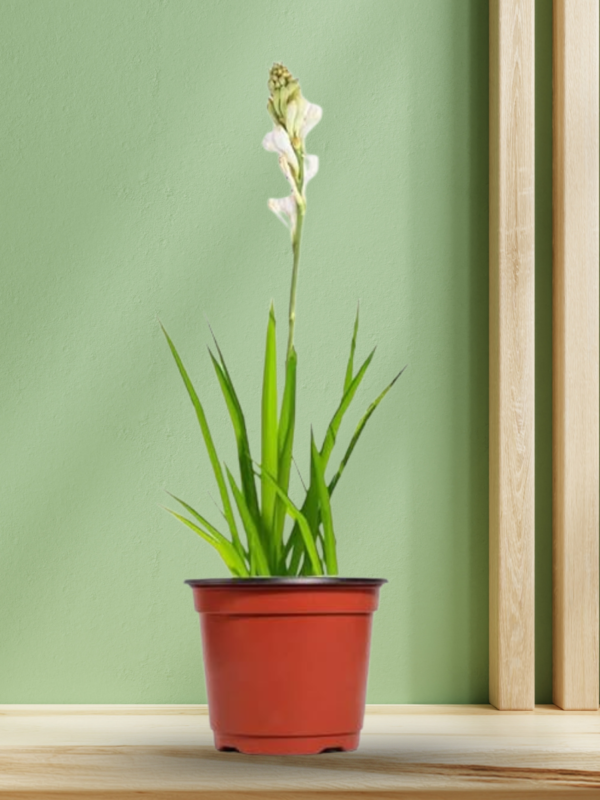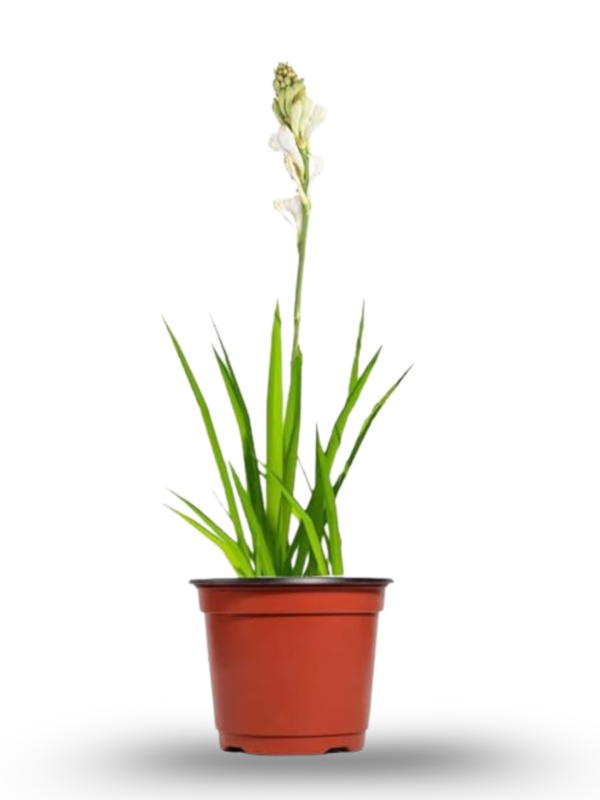Description
1. Botanical Information
-
Botanical Name: Polianthes tuberosa
-
Common Names: Rajnigandha, Tuberose, Nishigandha, Sugandharaja
-
Family: Asparagaceae
-
Type: Perennial, bulbous flowering plant
2. Origin & Distribution
-
Native To: Mexico
-
Widely cultivated in India, Southeast Asia, Africa, and the Mediterranean region for ornamental and commercial flower production.
3. Physical Characteristics
-
Height: 2–4 feet tall when mature.
-
Leaves: Long, narrow, grass-like green leaves growing in a rosette from the base.
-
Flowers: Tall spikes with clusters of pure white, waxy, tubular flowers that emit a strong, sweet fragrance.
-
Blooming Period: Typically blooms in summer to early autumn in warm climates.
4. Growing Conditions
-
Light: Prefers full sunlight for best flowering.
-
Soil: Well-drained, sandy-loam soil enriched with organic matter.
-
Watering: Keep soil moist during active growth; avoid waterlogging.
-
Temperature: Thrives in warm climates (20–30°C) and is sensitive to frost.
-
Humidity: Performs well in moderate humidity conditions.
5. Maintenance & Care
-
Planting: Grown from bulbs, planted in spring for summer blooms.
-
Fertilization: Apply a balanced fertilizer every 4–6 weeks during growth.
-
Pruning: Remove spent flowers to encourage more blooming.
-
Pests/Diseases: Can be affected by aphids, thrips, and fungal diseases if overwatered.
6. Uses & Benefits
-
Ornamental Value: Grown in gardens, pots, and as cut flowers for decoration.
-
Fragrance Industry: Flowers are used in making perfumes, essential oils, and attar.
-
Cultural Use: Popular in wedding garlands, religious offerings, and festive decorations in India.
-
Therapeutic: Its aroma is believed to have mood-lifting and stress-reducing properties.
7. Lifespan
-
Perennial when grown in warm climates; bulbs can be stored and replanted annually in colder regions.











 Dragon Dracaena
Dragon Dracaena
Reviews
There are no reviews yet.